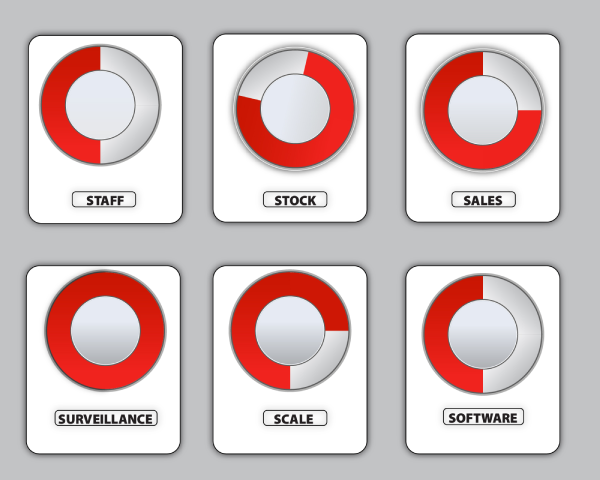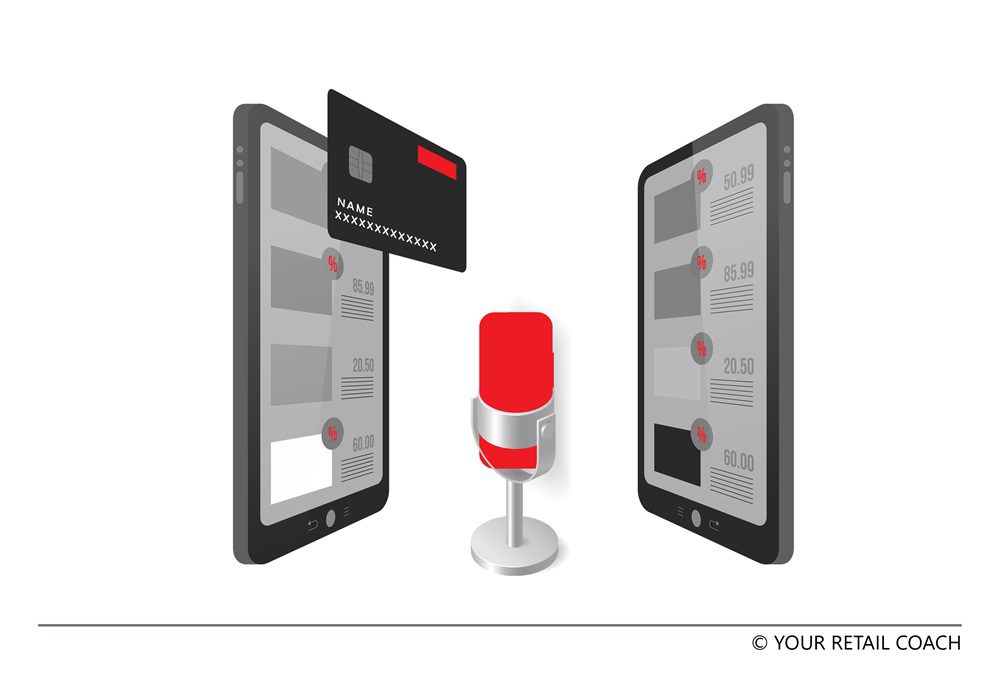Abracadabra
Today, even 5-year-olds know how to search on Google or YouTube using the voice feature enabled on smartphones. All they need is an unlocked smartphone connected to the internet. Measured today, maybe the adults will lag in statistics on this. However, the use of voice technology and voice-based search and purchase features in smartphones and other compatible digital devices with this facility are gaining popularity among customers. The ability to use speech to search for a product or service online and make an instant purchase decision makes it a compelling technology for retail and eCommerce. The surge in the use of advanced technologies like IoT and AI makes things further interesting. This blog covers how the ability to communicate with smartphones and virtual assistants by uttering words is making an impact in the world of retail and eCommerce automation.
What is Voice Commerce?
Voice Commerce is a derived word. It represents two elements – voice (the ability to use voice/speech to communicate with compatible devices e.g. smartphones) and commerce (using voice communication to facilitate online shopping/purchase). Sometimes it is also referred to as V-Commerce. It can appear in other forms but the underlying essence remains the same. Voice commerce is the use of voice technology to ease search and purchase activities for customers. It can be merged with other software and hardware capabilities for enhanced relevance.
In voice commerce, customers can use voice/speech commands to search for products and services or make purchases online. It gets away with the need for typing making it convenient for customers to use shopping apps and websites. The feature can come in-built within a shopping app/website or it can be used using virtual assistants such as Google Assistant (Google), Siri (Apple), and Alexa (Amazon). These voice-based virtual assistants with dedicated hardware (speakers w/out screens) take the shopping experience to another level. The use of Artificial Intelligence (AI) makes these assistants smarter and better at predicting the needs and wants of users.
Currently, voice commerce hosts a minuscule share of eCommerce transactions. As per a report, global eCommerce purchases via voice assistants are expected to experience a growth of over 400%.
How Voice Commerce Works?
Anybody who has used a smartphone will have a surface-level awareness of how simple voice-based features work. As a tool for shopping as well, adapting to the use of voice technology does not take much time. To start using voice technology for shopping via smart devices, customers must first enable the voice feature or the voice assistants in those devices including smartphones, speakers, or any other compatible device. After activating the voice feature, customers can use speech commands to search and buy products and services from one or more online shopping platforms. The more advanced a device is, the more complex commands it can execute. Some smart devices may allow customers to do a lot more than search and purchase like making changes in their shopping carts, changing payment methods, setting preferences, modifying delivery addresses, etc.
As a retailer, think how convenient it becomes for a customer to be able to do shopping by simply giving some speech commands to a smartphone or a virtual voice assistant speaker. Let us follow this with an example taking XYZ as a virtual voice assistant enabled on a smart television.
Customer: XYZ, please find me a tracksuit within the price of USD 100
XYZ: Are you ordering for yourself or someone else?
Customer: For myself
XYZ: Is it for your gym or walking?
Customer: Both
XYZ: Do you have any other requirements like delivery date or change in delivery address?
Customer: No
XYZ: Here are some of the best options on your screen
Customer: Go with the third one
XYZ: That will be USD 89.99. Do you want to order it now?
Customer: Yes, please place the order and choose cash-on-delivery as payment method
XYZ: Your order has been placed and the scheduled delivery is in two working days.
XYZ: Remember, I am just a call away. Have a nice day!!
This whole conversation (shopping activity) would ideally take place in less than five minutes. So, these five minutes are what the retailer (from whom the above customer made the purchase) needed to create a conversion. All the retailer had to do was incorporate voice commerce in their online sales platforms. Some important considerations in applying voice commerce are:
- Website/ shopping platform optimised for voice commerce (also consider other advanced technologies AI and AR/VR)
- Use of rich content (texts, images, videos) but highly specific for product description and other services
- Put emphasis on conversational keywords because how people talk is not the same as how or what people type)
- Association with voice assistant service providers because they are the ones who will take your customers to your online store/product pages
- Focus on personalisation, use of analytics
Edge of Voice Commerce
Voice commerce is taking retail and eCommerce to another level. Currently, it might not be a widespread technology used by customers and retailers. However, the benefits of using voice commerce are loud and clear. It is only a matter of time that not only voice commerce will become more popular but will come laced with advanced tools and technologies like AI, IoT, AR, and VR.
With voice commerce, consumers can not only shop from almost anywhere, as in conventional eCommerce, but also with much less physical effort i.e. by simply using speech commands to compatible devices. Essentially, voice commerce cuts short the shopping journey of customers to their advantage. Voice commerce also makes shopping easy for many people who may have difficulties in typing. Strange it may sound but eCommerce still has not reached even its average potential in many regions of the world. Conventional eCommerce might altogether get skipped in such regions with voice commerce emerging as its successor.
Reducing the activities involved in completing an online shopping order also benefits retailers. Purchase decisions of customers are hampered when information is not easily available to them or when they have to put in additional efforts for the same. Done right, voice commerce addresses this issue by following a systematic flow and presenting available information in one shot.
Albeit artificial, voice assistants seek to establish a human-like conversation with their users. This has a positive impact on user experience which eventually becomes customer experience. For example, an email telling us products we may be interested in is less appealing than a human-like voice doing the same in a calming and confident manner.
As retail and eCommerce consultants in the contemporary business environment, we believe that the use of AI makes voice commerce a completely different ballgame. As humans, we are not perfect in our online search and shopping activities. We rarely find the right product with one search query. This is where AI has the edge. AI-based voice assistants fill the informational gaps first. For example, we may have returned the product of a particular seller in the past. AI can remind us of that in case we somehow skip this important bit of information.
Challenges in Voice Commerce
No technology ever came with only benefits and it mars voice commerce too. While some of the challenges with voice commerce technology can be managed there are others so deeply embedded that removing them will remove the essence of voice commerce.
The factors associated with the adoption of voice technology stand as the foremost challenge on the part of other customers and businesses. Take the cost of adoption as an example. Popular voice assistants are still on the expensive side for a majority of people. To make the best out of voice commerce, customers also need to buy additional skills of these voice assistants. For an average business, reaching an agreeable price range to include voice-enabled services is not easy. These factors make voice commerce a toy of very few limited brands and customers.
As retail consultants for more than 10 years, we have witnessed that the mass willingness to embrace any new technology always takes time; voice commerce has only entered the chat. Closely associated are the concerns of privacy. The world has already seen umpteen news headlines on breaches or violations of the privacy of consumers by small and big tech companies. This further slows down the willingness of the common people to embrace new tools and technologies.
Integration is another major challenge in voice commerce. For superior performance and customer experience, voice commerce demands the integration of many platforms, devices, and services. These components usually belong to different entities governed by different regulations and business interests. While this is slowly changing it takes time to bring all key partners under one value chain.
Future of Voice Commerce
The use of voice technology and voice-based shopping via smartphones and other smart devices is rapidly gaining traction especially, in the developed and developing markets around the world. This trend is highly likely to continue to spiral because of the benefits associated with voice-based shopping to both customers and businesses.
The growing inclusion of voice assistants in everyday lives creates room for featuring voice commerce. According to a report, the number of voice assistants in existence is anticipated to reach 8 billion by the end of the year 2023. In other words, this represents the number of voice assistants being used in devices. That is a staggering number of voice assistants in use if we consider that the global population is also at the same level.
A critical technology used in voice assistant programs is NLP (Natural Language Processing) via which machines are taught to interpret and comprehend human language. However, the use of NLP is not confined to voice commerce only. Today, research and development activities in the field of NLP stand on full throttle. Improvements in NLP will further enhance the capabilities of voice assistants which will also lead to more advanced forms of voice-based shopping.
The integration of platforms is something that affects every field of work or profession. In the coming years, the world will have better cross-platform integration capabilities with the help of technology. This will prove to be a boon for voice commerce. Imagine refrigerators communicating internally with voice assistants and smartphone applications to remind customers of depleting milk stock. Thanks to IoT; voice commerce will not remain confined to a handful of devices like smartphones or smart speakers or smart TVs. The scope of accessing and using voice commerce will expand to include more and more digital devices.
Recap
To be able to use speech commands to find products or services in the online space and make a quick purchase decision makes voice commerce a useful technology for both customers and retail and eCommerce businesses.
In voice commerce, customers can use speech/voice commands to find products and services on the internet or make instant purchases. It drives out the need for typing rendering shopping more convenient for customers. In essence, voice commerce shortens the shopping process of customers to their advantage. It also makes shopping easy for people with difficulties in typing. With human-like conversational abilities powered by NLP, voice assistants can resonate with an emotional appeal which is missing in text-based mediums like chatbots or emails. The more advanced a voice commerce-enabled device or platform is, the more complex shopping-related commands or requirements it can execute.
When applying voice commerce for their businesses, retailers must ensure that certain important considerations like website optimisation for voice commerce and putting emphasis on the use of conversational keywords are duly emphasised.
Some of the factors that will slow down the growth and popularity of voice commerce are the adoption cost of the technology, the natural time required for embracing any new technology, privacy concerns, and cross-platform/device integration.
Voice commerce is reshaping consumer behaviour and their shopping journeys or processes. This, in turn, is reshaping how values are offered and delivered in retail, eCommerce, or omnichannel. The integration of advanced tools and technologies like AI, IoT, AR, and VR with voice commerce will make the latter a much more potent technology.
For business solutions and services on retail automation or to speak to one of our expert omnichannel consultants, please drop us a message and we will reach out to you.
FAQs
What is Voice Commerce?
What is the Future of Voice Commerce?
What to Consider in Implementing Voice Commerce for my Business?
Some important considerations in applying voice commerce are:
- Website/ shopping platform optimised for voice commerce (also consider other advanced technologies AI and AR/VR)
- Use of rich content (texts, images, videos) but highly specific for product description and other services
- Put emphasis on conversational keywords because how people talk is not the same as how or what people type)
- Association with voice assistant service providers because they are the ones who will take your customers to your online store/product pages
- Focus on personalisation, use of analytics
Retail Healthometer
Check the health of your business? Are you ready to organize & scale ?












